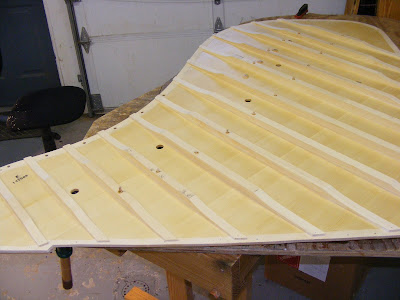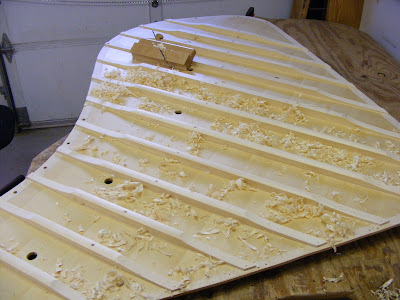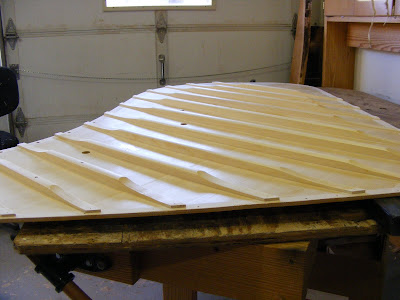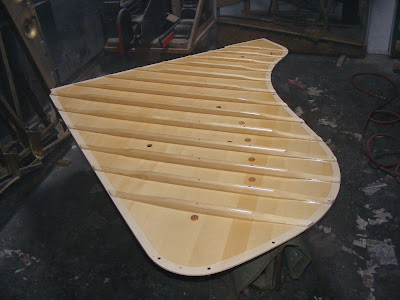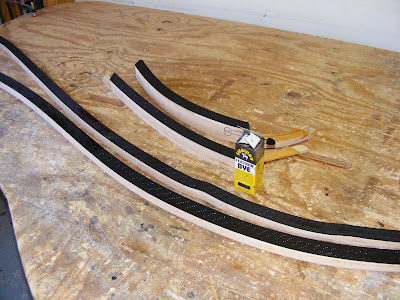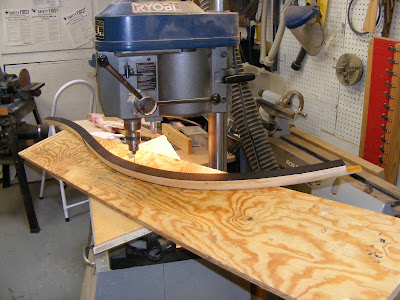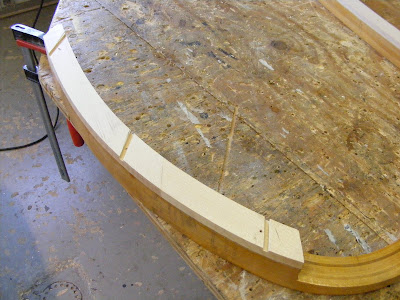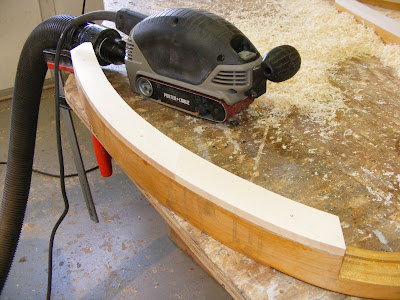


My soundboard press serves two purposes. It is not only a soundboard press, but also a bridge press. Many rebuilders have a separate fixture for gluing bridges, but in my small shop, space is a major issue, so if I can use one fixture for two purposes, I am happy.
I use liquid hide glue for mounting the bridges. It has a long open time (15-20 minutes), and is easily reversible in case the bridge needs to be removed at a later date. I also think hide glue has a very good sound transmission quality, although that is hard to quantify.
A heavy coat of glue is applied to the bridge body only. The bridge is placed on the new board using the locater pins to position it. Several screws are used to hold the bridges in place, and then the board is turned upside down on the bench. Now I use temporary screws in the holes where dowels will later be installed, through the rib and into the bridge. Finally the board is placed on the press, and the area between the ribs are clamped in place with air pressure.
After the board has been in the press for 5-6 hours, the screws in the ribs are removed, and dowels are installed.
